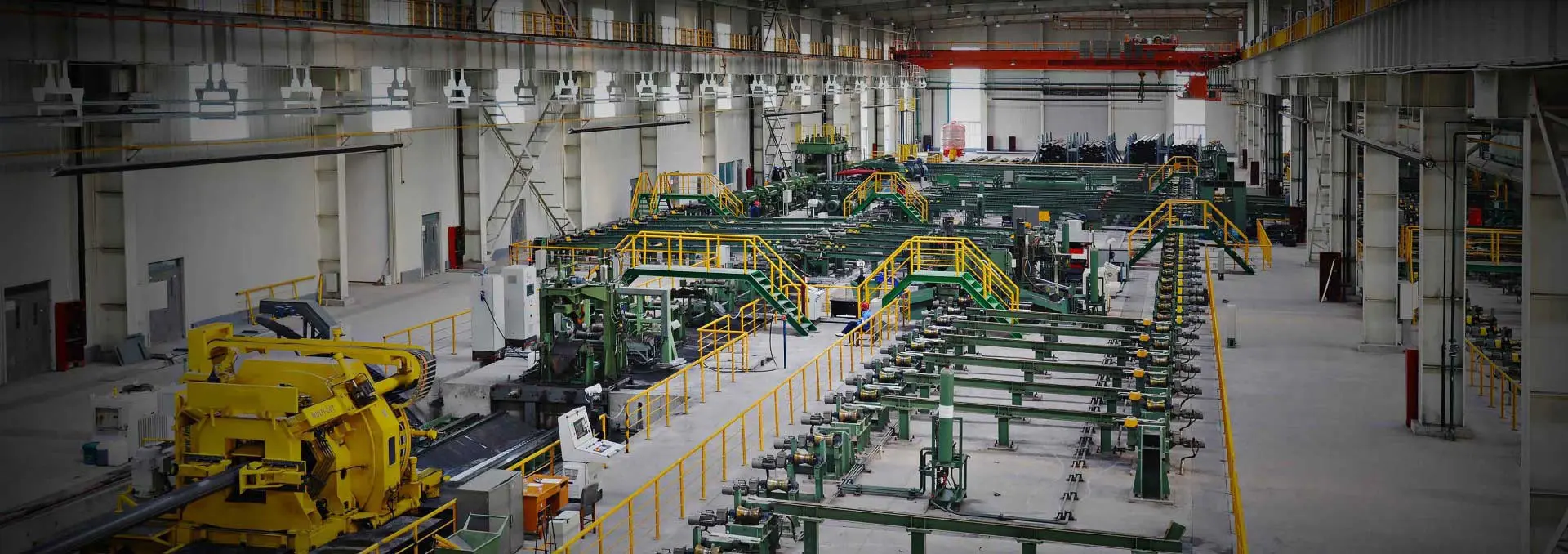BS 1387 is a key British standard that specifies requirements for galvanized and non-galvanized steel pipes.
Its full title is “Specification for Screwed and Socketed Steel Tubes and Tubulars and for Plain End Steel Tubes Suitable for Welding or for Screwing to BS 21 Pipe Threads.”
Although superseded by EN 10255, BS 1387 pipes are still widely used in water supply, gas pipelines, structural frameworks, and fencing systems.
The standard defines three wall thickness series: thin-wall, medium-wall, and heavy-wall.
BS 1387 Steel Pipe Technical Scope and Specifications
This standard covers:
Manufacturing methods (welding and seamless rolling)
Mechanical properties, dimensional tolerances, and test methods
Threaded and socketed connections
Protective coatings such as hot-dip galvanizing
BS 1387 pipes are suitable for welding or threading to BS 21 standards and are used across the oil, gas, construction, and water supply industries.
Key Features of BS 1387 Galvanized and Black Steel Pipes
Material Options:
Available in galvanized (GI) and black (non-galvanized) steel finishes.
Manufacturing Process:
Produced through high-frequency welding (HFW) or seamless hot rolling, followed by grinding, pre-treatment, and uniform coating application.
Hot-Dip Galvanizing Process:
A molten zinc coating forms an iron-zinc alloy layer that offers strong adhesion, uniform thickness, and excellent corrosion protection for extended service life.
BS 1387 Steel Pipe Applications and End Types
Typical Applications
Fluid Transport: Water, gas, oil, and other low-pressure fluids
Structural Applications: Scaffolding, framing, railings, and fencing
Mechanical and General Engineering: HVAC systems, agriculture, and machinery
End Types
Screwed and Socketed Ends: Threaded ends for quick, secure joint assembly
Plain Ends: Smooth ends suitable for welding or threading to BS 21 pipe thread
Common Trade Names: Often called “gas pipes” or “water-gas pipes”.
BS 1387 Pipe Classification by Wall Thickness and Coating
1. Classification by Wall Thickness
Light (Thin-Wall): For light-duty use, such as indoor plumbing
Medium (Medium-Wall): Most common type for general water, gas, and air systems
Heavy (Thick-Wall): For underground or high-load applications requiring greater strength
2. Classification by Coating
Galvanized Steel Pipe (GI): Hot-dip zinc coating on both sides for excellent corrosion resistance
Black Steel Pipe: Uncoated pipe with black oxide film; needs anti-rust treatment before use
BS 1387 Class B and Class C Galvanized Pipe Comparison
|
Specification
|
Zinc Coating (min.)
|
Approx. Thickness
|
Key Features
|
Typical Applications
|
|
Class B
|
375 g/m²
|
≈55 µm
|
Light coating, smooth surface, economical
|
Indoor or low-corrosive environments
|
|
Class C
|
475 g/m²
|
≈67 µm
|
Heavy coating, high corrosion resistance
|
Outdoor, buried, or marine conditions
|
Key Difference:
“Light/Medium/Heavy Duty” → refers to pipe wall thickness (mechanical strength).
“Class B/Class C” → refers to zinc coating thickness (corrosion protection).
For example, a Medium Duty, Class C pipe provides both medium mechanical strength and heavy galvanization.
BS 1387 Steel Pipe Dimensions, Threads, and Mechanical Properties
Threaded Ends: Use BS 21 (ISO 7-1) tapered threads for compatibility with standard fittings.
Nominal Sizes: Based on BS system—½" (21.4 mm OD), ¾" (26.9 mm OD), 1" (33.7 mm OD), 1¼" (42.4 mm OD).
Mechanical Strength: Includes tensile, flattening, and bend tests to ensure safe operation under pressure.
Hydrostatic Testing: Each pipe undergoes hydrostatic pressure testing before leaving the factory to ensure leak-tightness and strength.
Conclusion: Why Choose BS 1387 Galvanized Steel Pipe
BS 1387 steel pipes combine reliable strength, corrosion resistance, and versatile applications.
They are ideal for water and gas pipelines, structural systems, and mechanical engineering.
With their proven mechanical integrity, standardized dimensions, and long service life, BS 1387 pipes remain a trusted and cost-effective choice in global markets.
FAQ: Common Questions About BS 1387 Steel Pipes
1. Is BS 1387 still in use today?
Yes. Although it has been replaced by EN 10255, many countries and manufacturers continue to use BS 1387 due to its familiarity, consistent performance, and compatibility with existing systems.
2. What is the difference between BS 1387 and EN 10255?
Both standards cover similar steel pipe requirements, but EN 10255 is the updated European version.
It includes stricter dimensional tolerances, improved mechanical property classifications, and updated testing requirements.
3. How do I choose between Class B and Class C galvanized pipes?
Choose Class B for indoor or low-corrosive environments where cost efficiency matters.
Choose Class C for outdoor, buried, or marine applications requiring enhanced corrosion resistance.
4. Can BS 1387 pipes be used for welding?
Yes. Plain-end BS 1387 pipes are suitable for welding applications, while screwed and socketed pipes are intended for threaded joint assembly.
5. What are the typical sizes and pressure ratings of BS 1387 pipes?
Common nominal sizes range from ½ inch to 6 inches. Pressure capacity depends on wall thickness:
Light-duty pipes: Suitable for low-pressure water or gas
Medium-duty pipes: Suitable for standard plumbing and air lines
Heavy-duty pipes: Used for structural or higher-pressure systems

 English
English Español
Español




 Tel : +86-18565811709
Tel : +86-18565811709 Email :
Email : 
 News
News




